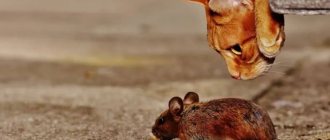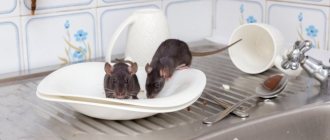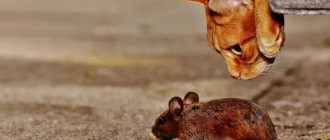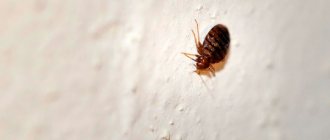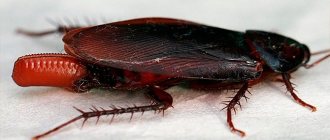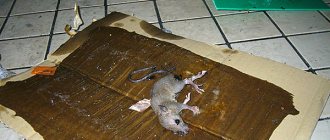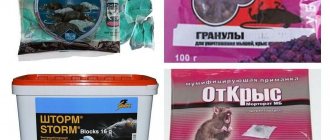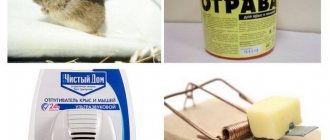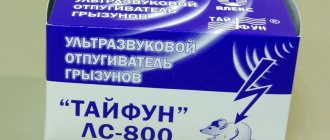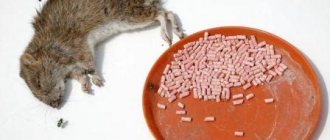Mice glue is a special product that immobilizes but does not poison the animal. Used when there is a small number of pests. Pets often fall into such traps: cats or dogs. But rodents get used to such a trap and, over time, learn to bypass it. The adhesive is popular due to its ease of use and low cost per individual plate.
- What to choose: glue or ready-made traps?
- Popular glue traps Rodents
- Mr. Mouse
- Forsyth
- Block
- Alt
Glue for rats and mice - what is it and how does it work?
Probably, many had to deal with such minor “living problems” as rats or mice.
These unpleasant rodents cause only one problem: from banal fright to damage to furniture and other household items. But people have learned to counteract them quite effectively using “special glue.” Glue against rats, mice and insects is a special preparation that is designed to combat rodents; It does not dry out for a long time, which is why it retains its properties for a long time. It is applied to different surfaces along with bait and placed in the place where the activity of the “enemies” is greatest. The rodent, sensing the smell of food, unsuspectingly, goes to the trap you have prepared. Upon contact with the glue, his body sticks and he dies. The rodent cannot get out. All you have to do is get rid of it.
When using different brands of glue, you must strictly follow the instructions. Deviation from them threatens with negative consequences (although not all of them pose a danger to humans). The entire process of using this product will be described below.
How to use:
- First you need to decide on the location of the bait. Choose the best place where rodents can quickly find it and start their “last” meal
- you should prepare cardboard boxes. Usually use dimensions of 10 by 10 cm (more is possible)
- do not forget about personal safety measures: wear rubber gloves, grab tweezers and a toothpick (in case of high toxicity of the glue)
- Without sparing the glue, apply it in large quantities onto the cardboard, spreading it in a circle. It would be best to cover the entire area to be sure to catch the rodent
prepare a mixture, poison for smearing near the habitat or frequent place of movement of rats, mice, you can use anything as bait: from sausage and frankfurters, to grain and bread, if a rat is caught, you will hear a strong squeak, which will indicate the successful operation of the glue, repeat these procedures until you destroy them completely
What to do with caught victims
When adhesive users first turn to this method of catching pests, they often have the question of what to do with the caught rodents. The choice of the most appropriate option from an ethical point of view remains up to the hunter himself . There is only one piece of advice that will allow you to deal extremely humanely with a captured animal. To alleviate his suffering, you can generously wet a piece of cloth with gasoline or acetone and place it on top of the caught victim. She will first lose consciousness, and after that, being in an unconscious state, she will suffocate.
To make it easier for a rodent to die in a glue trap, cover it with a piece of cloth soaked in gasoline or acetone.
Few are ready for such actions. Traps are most often simply thrown into the garbage chute with mice still alive, leaving them in a painful and hopeless situation.
There is an opinion that the substance in the trap gradually dries out, but this is not the case. Due to its special composition, it retains its effectiveness until its layer becomes dirty with dust, sand from the street, flour or dirt. For this reason, it is advisable to change the substrate with the substance approximately every 6-7 days.
Components and properties of adhesive compositions against mice and rats
Mouse repellent glue is an effective tool that can be used to get rid of rodents or at least greatly reduce their numbers. To understand how effective it is, you need to understand what is included in the composition.
Main components:
- Cycloisan.
- Polyisobutylene or polybutylene.
The combination of these substances is a viscous mixture that remains sticky for a long time. The principle of operation can be explained in a visual sequence:
- The owner of the premises calculates the places where the animals run more often than elsewhere, looking for “mouse trails”.
- The adhesive composition is applied to the selected areas in an even layer.
- While running along the usual path, the animal ends up on a sticky area and begins to struggle, thereby getting bogged down even more.
Do not leave a homemade device in a room with high humidity or a lot of debris. An unpleasant moment is removing the body from a dried surface.
Advantages and benefits
Rat glue has a number of strengths and weaknesses. Advantages of the method:
- The adhesive composition does not emit toxic fumes during use.
- Easy to use. You don't need any additional skills to use mouse repellent.
- There is no unpleasant smell.
- The adhesive mass does not dry out for a long time, while firmly holding any object that falls on it.
- Availability, low cost.
- Weather conditions do not affect the effectiveness of the purchased product.
- Long shelf life.
The adhesive composition easily holds large rodents, which allows it to be used effectively against rats.
Rodent repellent glue has a number of weaknesses. These include:
Low efficiency with a large number of mice. Such situations can be overcome by combining poisons with traps over a large area
It is important to block all passages and “poison” the main paths. Pets may accidentally step on the sticky area
It is difficult to remove carcasses from the adhesive layer.
This method of killing rodents is considered inhumane, since the animal will die for a long time and painfully.
Glue Alt
It is an adhesive mass that has a gel-like consistency. It has no smell or color. Glue Alt from rodents does not emit harmful fumes, however, its entry into the human body is unacceptable and dangerous.
The composition is a mixture of several components:
- Cyclosan – 9.6%.
- Polyisobutylene – 80.8%.
- Polybutylene – 9.6%.
Advantages of Alt glue:
- Low cost.
- Low consumption - 20 grams is enough for one 20x20 cm plate.
- Can be used where poisons are prohibited.
The trap needs to be checked once every 2 days. Suitable for use in hospitals, food storage, grain storage.
Kotofey
Kotofey glue is an effective mouse repellent, the composition of which consists of the same components as Alt products. Packaged in metal tubes with a capacity of 135 grams. The adhesive mass does not emit toxic fumes and is safe for the human body.
Advantages of Kotofey:
- Low cost.
- Ease of use.
- Low consumption.
- Resistant to high humidity and debris.
Bait increases the effectiveness of the trap.
Glue “Clean House”
The composition is a mixture of three components:
- Polybutylene – 76.6%.
- Cyclocaniol – 10.9%.
- Polyisobutylene – 12.4%.
It has several main advantages:
- Does not freeze for a long time.
- High viscosity, adhesion.
- Does not deteriorate with prolonged exposure to moisture.
- Safe glue for pets and people.
- Low cost.
Efficiency is increased by adding bread, cheese, and cereal to the sticky layer.
Trap
Glue used to catch insects, mice, rats. Safe product for people and pets. Does not emit harmful substances during operation. Traps based on this adhesive mass are made in the same way as with other compositions.
Glue forms
The drug exists in several forms.
There is a known composition that serves as an alternative to the usual mousetraps and traps. A non-toxic adhesive - for example, such as "ALT" - allows you to catch gray pests inside and outside residential premises, agricultural buildings, and personal plots. Its use is recommended for both dry and wet rooms.
There is also an adhesive composition that allows you to fight small mice in the private sector. Its key component is polybutylene. The effectiveness of the drug decreases only at low temperatures. One such trap is enough for 1 room or 5 meters of usable area. The drug shows excellent results in both dry and damp rooms.
There is also a glue trap for pests that live in the garden. It acts instantly, allows you to reduce the number of mice, and is not dangerous to human health.
You can purchase a ready-made glue board. This product attracts the rodent with special components called attractants. By using the product in this form, you eliminate the need to apply it to surfaces and then remove the residue. The glue board is easy to use - just remove the protective film and install the trap in the desired location.
You can use a liquid suspension sold in sealed tubes or jars. The composition can be applied to washable surfaces - ceramic tiles, plastic, glass, granite. Before use, you should test the product on a small area and see how it washes off. It is acceptable to use glue in this form on pieces of plywood or cardboard, which are then thrown away.
Advantages and disadvantages
The advantages of glue against mice include:
- Ease of use: the product can be sold separately or as a ready-made trap. In the first case, the mass must be applied to cardboard or a board, in the second - simply installed near your residence;
- Safety: glue for rodents is non-toxic and not dangerous for people and pets, does not emit toxic fumes;
- No odor: the mass does not smell of anything and does not cause irritation;
- Efficiency: if the mouse gets into the mass, it will no longer be able to come off on its own;
- Long exposure time: the substance remains soft for 20 days, does not lose properties in light or heat;
- Low cost: for example, “Clean House” glue against rodents costs about 100-200 rubles.*
However, glue for catching mice also has some disadvantages:
- Still, this is not the most humane way: the mouse dies of thirst and hunger for several days, during which it will call its relatives for help. Of course, you can end her torment by killing her with your own hands, but few people will dare to do this;
- Possible danger for children and pets: upon contact with children's skin, an allergy may occur; if animals stick, you will have to
Let's catch everyone!
A week later, when I came to check the traps in the garage, there were already three mice there. The first one deteriorated quite noticeably. The second two were caught recently.
But the strangest thing that discouraged me more than mice were dung flies. There were at least fifty of them. There don't appear to be any flies in the garage. Where did they come from? It's a big mystery to me.
After use, traps should be placed in a separate bag and thrown away. If the mouse is still alive, then it is better not to torture the poor animal and simply drown it in a bucket of water.
Brands of adhesives against mice
Today, several manufacturing countries produce glue for catching mice. Here are the most common brands:
Alt glue (Alt) made in Russia. This mechanical rodent control device can be used in all types of premises, as well as in garden areas. Alt glue achieves its greatest effectiveness in the fight against house mice
Rats are the most cautious, so it makes sense to deal with them in several ways.
Kotofey is a Russian glue trap. This glue is suitable not only for catching mice and rats, but also for crawling insects such as snails and caterpillars.
Forssyth (manufactured in Russia)
This glue is good because it is a drug of the fourth class of danger, which means it can be used in rooms with children and people prone to allergies.
There are also imported products. Here are the most popular ones:
RaTrap - Czech Republic. This glue is highly sticky, which allows it to hold even large pests. It also contains a food attractant that lures rodents.
EuroGuard - Italian product
It differs from other drugs in that it can be used in a wide range of temperatures, which is especially important when catching rodents in basements and refrigerators.
All of the above products are packaged identically (in an aluminum tube of 135 grams each) and have a similar chemical composition and effect. To choose a specific brand of glue for catching mice, you will have to try several products from different manufacturers.
Ready-made glue boards are also available on the market. The convenience of using them is that you do not need to look for suitable cardboard and apply the glue yourself. Accordingly, in this form the drug will cost much more.
https://youtube.com/watch?v=tS0hhXt-khY
Cats aren't the same anymore
Get a cat to catch mice. Have you seen modern cats? Do you seriously think they'll catch anyone?
We have a dozen cats wandering around our garden. I never saw any of them carrying a mouse in their teeth.
What should those who are allergic to cats do? This method is not suitable for such people.
Kinds
Today, manufacturers offer a wide variety of products to combat harmful rodents. Therefore, you are unlikely to experience a shortage of glue for mice. But such a wide offer does not guarantee an effective result. After all, there are also ineffective products on store shelves.
Application
Therefore, you need to approach the choice of one of them with special care, giving preference to proven brands. Only high-quality, effective and absolutely harmless glue will be an assistant in pest control:
- Almost all existing products are non-toxic and odorless preparations. They contain active ingredients such as cycloisan, polyisobutylene, and polybutylene. A similar preparation is applied in separate strips in those places where the mouse family presumably lives. If it is necessary to catch not a mouse, but a rat, it is recommended to firmly fix the strips with glue on the floor, as shown in the photo. The adhesive composition against mice is applied exclusively with rubber gloves. Since the drug is toxic, the skin of your hands must be protected. If no one falls into the trap for some time, it is moved to another place. According to the instructions of most of these drugs, they cannot be stored in places where the temperature exceeds 30 degrees Celsius;
- You can also purchase an adhesive composition for mice that have infested in a private home. This product is based on polybutylene and is used to combat small rodents. It is used in all rooms without any restrictions regarding the level of humidity. Moreover, this glue does not dry out at all. According to reviews, its effectiveness can be reduced under the influence of sub-zero temperatures. It is applied to the plane using bait, as shown in the photo. You only need one such trap per five meters of room area or one trap per room in a residential building;
- A glue trap for controlling garden rodents is another type of similar means. According to reviews, it is very effective in getting rid of mice on the site. The advantage of a glue trap is its absolute non-toxicity, which means it does not affect the body in any way. This product can be purchased as a supplement to popular and effective repellers. After all, the latter begin to act after some time, and anti-mouse glue works from the first seconds of application;
- Today it is also possible to purchase glue with bait. This greatly increases the positive effect. In this case, mice are lured to the trap using attractant substances. Therefore, the population of these animals will decrease significantly. This option is more practical and profitable. There is no need to adhere to the technology of applying the composition to the surface, or to wash off the remaining product from the floor.
How to replace mouse glue
In some situations, the use of glue is impossible or ineffective. In this case, there are several alternative options:
You can use a traditional mousetrap. The rodent will be killed without your assistance. All you have to do is throw it away.
Mummifying poison. Quite a convenient way to fight rats. But then the dead rat or mouse will lie under the furniture, where you will not be able to see or reach it.
Loose poison. This type of poison is suitable only in rooms where there are no other inhabitants. The bright color of the drug can attract a child or pet. In addition, a cat or dog can eat a poisoned rodent.
Ratcatcher cat. A rather unusual method of controlling rodents, but very effective.
Ultrasonic repeller. The most modern method. It is based on the fact that a device inserted into a socket emits a sound that cannot be heard by humans, but cannot be tolerated by mice and rats. They just run away.
Ultrasonic mouse repellers
Such devices are more suitable for country houses and open areas of nature. They are good at repelling rodents from basements, garden beds and other large areas. But rodents are very smart animals, it’s not for nothing that they are trained and used in the circus. Very quickly the animals understand that the sound, although unpleasant, does not pose any danger. When an animal is faced with a choice between hunger and discomfort, it will definitely choose food over convenience. And after some time, the mice become so accustomed to the noise that they stop perceiving it.
An ultrasonic rodent repeller is very effective.
Instructions for using glue
Using glue from any of the above companies is quite simple, as is making a glue mousetrap with your own hands:
- Cut a piece of cardboard, plywood or plastic larger than 10 cm for mice or 20 cm for rats. Moreover, the color of the selected substrate should not stand out against the background of the floor or walls. When fighting rats, it is recommended to screw it to the floor using screws or self-tapping screws so that the caught animal does not smear everything around it.
- The glue is applied to the substrate in a thick layer in strips of 2-5 cm; it should be taken into account that the substance acquires the necessary viscosity only half an hour after application.
- Food bait for mice is placed in the center: a piece of bread with sunflower oil, sausage or lard.
- A glue trap for mice is installed in places where there is a maximum probability of rodents appearing: corners of the room, near walls or found holes, near a trash can, front door, ventilation.
- The distance between the substrates during installation is 3-15 m and depends on the total area of the room, the number of furniture and rodents.
- When placing, you should take into account the presence of small children and pets in the apartment, so traps should be placed under the bottom of furniture, covered with a leaning board, or special houses should be used.
- Traps should be inspected regularly to dispose of caught specimens and to replace those that have accumulated dust or debris.
If the trap is used against rats, then the check should be done daily, because the pest, having covered itself with glue, will notify all other inhabitants of the colony about the danger with its squeak, as a result of which other individuals will no longer be tempted by the bait. But mice do not have such mental abilities, so they come across several of them at once.
Safety precautions
Despite the fact that mouse glue does not emit toxins or poisons, you should adhere to some safety measures:
- Wear disposable rubber gloves before applying the product.
- Apply glue to the base using a brush or sponge. You can't do this with your hands!
- Remember that glue traps should be kept out of the reach of children and pets. If possible, completely limit entry into the room until the pest is caught.
- After all manipulations, you must wash your hands with soap and running water.
- If glue does get on your skin, you can wash it off with acetone or special gasoline. After finishing work, be sure to wash your hands thoroughly with soap. If the product gets on your hair or fur, it is extremely difficult to wash it off and most often you have to remove the contaminated area with scissors.
Disadvantages of the method
The effectiveness of the products is noticeably reduced in rooms with high concentrations of dust, dirt and moisture. Therefore, to achieve maximum effect in such conditions, it is recommended to change the substrate with glue for rats at least once a week.
When using adhesives, the following factors must be considered:
Pets may be tempted by the bait and harmed by the drugs. This is especially true for hamsters, guinea pigs and cats. In such cases, in order to remove the stuck composition, you will have to cut out the glue along with the wool. Allergic rashes may appear on the skin of animals. It is highly undesirable to use the compositions in rooms where there are children.
If you are careless, they can get dirty; the glue will have to be removed with special means. This method is ineffective in fighting rats and is more suitable for catching mice. And the last thing is getting rid of trapped animals
DIY traps
If you start fighting rats before they begin to multiply at a huge rate, then there is a chance that you will only need a trap once or twice. The prices of traps for rats range from 300 to 3000 rubles. Agree, this is a rather expensive gift for a rodent that you want to get rid of. Therefore, it is worth thinking about how to make a rodent trap with your own hands.
General recommendations for catching rats:
- Bait. If you want to interest and lure this intelligent animal into a trap, you need to choose the right bait. Firstly, it must be fresh food - the prevailing opinion that rats love garbage dumps is somewhat incorrect. Rats love tasty and fresh food much more than garbage assortment. Therefore, fresh cheese, lard, porridge with butter, sausage and similar products are suitable. A rat is unlikely to get caught on vegetables, fruits and bread.
- Hygiene. If the trap or trap is designed for repeated use and has already been used, the device must be washed and cleaned most thoroughly. The rat's sensitive nose will detect the smell of blood or excrement of its predecessor, this will force it to avoid the trap. It is not advisable to use special products for cleaning - a strong perfume composition will again scare away the rodent. The ideal option is a solution of ash liquor - the ash is mixed with water, and the resulting mixture washes off all contaminants. But since it can be difficult to find this in urban areas, you can get by with soda.
- Location. If you know where the rat holes are located, the task becomes easier. The trap should be placed next to the exit along the wall, in a place where little light reaches.
From simple to complex
Simple options are sometimes the most effective. In order to rid your country house or barn of rodents, you can try using a bottle trap. To do this you will need:
- sunflower or any other vegetable oil;
- bait;
- large bottle;
- knife or scissors;
- tape or wire.
Some traps are a little difficult to make, but the results are well worth the time invested
Insert the cut part into the bottle with the neck inward. Secure both parts together. The trap is ready. The animal will be able to get inside, but will not be able to get out because of the slippery walls. This is the simplest and most budget-friendly option for a rat trap. It is not suitable for large rodents.
A water trap is a large bucket filled one third full of liquid. The walls of the bucket should be oiled so that the animal cannot escape. A “path” with bait should be connected to the center of the bucket from the edge, installed in such a way that under the weight of the animal it falls into the bucket. The rat will not be able to get out of the bucket and will drown.
A rat trap is a live trap that does not kill a rodent, but simply catches it
A mechanical rat trap is made using a simple design, but the effectiveness of such a device is high. In addition, this design is suitable for large specimens and can simultaneously capture not one, but two or even three medium-sized rodents.
A rat trap is a box whose roof is not flat, but sloping. A bait is attached to the inside of the roof. Two windows are cut in the opposite walls of the trap, between which a bridge is attached, consisting of two parts on hinges. Its design should be such that in a calm state it is horizontal, but when the rat approaches the bait along it, the bridge “dives” down, overturning the animal, and returns to its original position. The rat will no longer be able to get out, since the hole is blocked by the same bridge.
This is interesting: how to catch a rat.
DIY electric rat trap
To make such a trap, you will need to remember the school physics course, especially the “Electricity” section. The floor of the trap is usually made of wood, and in one place a small depression a few centimeters wide is made, and bare wires are passed through the floor. On top there is a piece of tin, which is set in motion under the weight of the animal. The bait is placed in a key place: when the rat gets to it, the plate goes down and closes the contacts. The rodent dies on the spot due to electric shock.
Some recommend making such traps covered, with transparent plexiglass walls. Some people combine mechanical rat traps with electric ones for reliability.
Alternative to glue and cool traps
There are a number of alternative options that can replace anti-mouse glue. They have their own characteristics, which leads to changes in operating rules.
These include:
Classic mousetraps. The death of a rodent occurs almost instantly
It is important to choose the right bait, choose a place to install the device and not leave your own odors. Rodents can successfully bypass them due to non-compliance with clear installation rules
Poison
It can only be used in rooms where there are no people or pets. Prohibited for use in hospitals and food storage warehouses. Poisoned mice and rats come out of hiding. But some of them die in hard-to-reach places, decomposing in the process. On sale you can find a poison that mummifies the carcasses of animals, thereby eliminating a persistent, unpleasant odor. Ultrasonic repeller. It is a compact device that connects to a common network. Creates ultrasonic waves that are inaudible to humans. Rodents are frightened by this sound. They begin to avoid the room where the device is operating. However, over time, mice can become accustomed to ultrasound. As a rule, rats are repelled by signals with a frequency of 20-50 kHz, mice by 10-20 kHz.
Many owners of private houses or apartments get a cat. This pet will not only create a more comfortable environment and delight others, but will also prevent mice from appearing. But in this case, the feline family is likely to catch some kind of infection or even get poisoned through a poisoned rodent carcass, which happens to almost all animals.
Which is better, poison or a glue-based trap?
When using chemicals, there is a big plus: rodents die, and entire families. That is, if you have a large number of them, then it’s worth using chemicals. A trap will definitely not cope with a rodent infestation. The downside of poisons is their toxicity, both for humans and domestic animals. It must be taken into account that poisons cannot be used in canteens and cafes either. Rodents that eat poison can die in a place inaccessible to humans. This means that the corpse will decompose, and a foul odor will spread around
When used as a trap, the dead animal is thrown into the trash can.
It is also important to take into account that a cat, as a real predator, can eat a poisoned rat and die. If a mustachioed hunter gets into a sticky trap, then the worst thing is that it will be a cut piece of fur that will grow back in a couple of months
Many poisons contain components that are toxic to humans; if they enter the digestive system, they can even cause death, so they are dangerous to use in homes where small children live.
The situation is different with traps - they belong to the 4th class of danger to humans. But still, such funds should not be allowed to fall into the hands of children. To effectively control rodents, it is better to combine traps and poison. You can use traps and ultrasonic repellers. One thing is clear, it is easier to prevent the appearance of rodents than to fight them later. To do this, you need not to leave food deposits, especially if you have a subsidiary farm. If you live in high-rise buildings, take out trash in trash cans, do not litter in the hallways.
As an option, get a rat-catcher cat, who will definitely make sure that you don’t have rodents. You can periodically do preventive maintenance - lay out traps or mousetraps.
Ways to fight
Mouse in a trap
The most effective method of controlling mice and rats is regular deratization by specialized services. But this measure has several side, negative consequences. Pesticides used to treat premises are very toxic, and small doses entering the human body can lead to allergic reactions and poisoning.
Penetration of chemicals can occur after treatment of basements and attics, and in cases of failure to comply with basic rules of ventilation and cleaning, after treatment indoors. But even such treatment does not guarantee the complete destruction of mice and rats.
How to dispose of caught rodents
Many people wonder how to dispose of caught rodents? A common solution is to simply throw it away. There is no need to wait for the creature to die, since the odor emitted from the corpse will not only be extremely unpleasant, but also difficult to remove. But remember that a newly attached animal can be aggressive.
Before disposal, it is advisable to place the animal in several plastic bags until completely sealed. Firstly, the rodent will die faster from lack of oxygen. Secondly, there will be a guarantee that no one will eat it. The latter is really important, because these animals are carriers of many diseases.
Features of using glue
Glue for catching rats is a special mixture that has a distinct odor, but is safe for people and pets, and is also convenient to use. The main ingredients in this product are polybutylene, cycloisan or polyisobutylene. They combine into a viscous thick substance that does not dry out for a long time. These characteristics allow you to use a certain amount of the drug for a large surface.
Glue against rodents should be applied to the surface of objects or the floor, but the second option is less preferable, since sooner or later the product will have to be removed, and this is not so easy. First of all, you need to determine the location of the animals; this can be done by the presence of residues of their metabolic products. A piece of food is placed on the adhesive substance; you just need to place it in the center so that the rodent has to put its paw on it.
Glue for catching rats is a special mixture that has a distinct odor, but is safe for people and pets
The substance is applied to a hard, flat and smooth object. A surface such as board, cloth or plywood will not work as the product will simply be absorbed into them. Smooth polystyrene foam pallets are also not suitable for use. An excellent choice are products made from plastic of sufficient rigidity. Plant seeds, cereals, grains, bran, bread, and vegetable oil are used as bait. The larger the trap, the more bait is required.
Folk craftsmen are quite successful in making these devices on their own. To do this yourself, you will need a sheet of cardboard or plastic, it should not be too large, for example, no larger than a sheet of notebook, the glue should have a high degree of fixation. After preparing the base, glue is applied in tracks; they should be several centimeters wide in length, and the distance between them should not exceed 4 centimeters, otherwise the animal will have the opportunity to get out.
The product is extremely easy to use, so even a person without much experience can handle it.
If everything is done correctly, then it does not matter at all what size the rodent is, since the glue is remarkably effective. It contains no toxic substances, so the product is completely safe for humans, because it does not have a negative effect on the respiratory system
It is important to note that there are ready-made products, that is, bases coated with glue are sold immediately, that is, the user simply needs to take it out of the packaging and place it in a certain place where rodents most often operate.
Glue from rats and mice is an excellent remedy for controlling household pests; it shows a high rate of effectiveness, although it has serious drawbacks, first of all, this is manifested in humanity. Because the animal faces a long and painful death. The owner will have to scrape off its body or even kill the rodent if it is still alive at the time of discovery. If you set such a trap in the country and do not appear for a long time, a specific smell will appear from the caught animals.
Features of rat control
Due to the excessive fertility of rodents, any apartment or house in a matter of weeks can turn into a breeding ground for tailed pests, since only one female during this time is able to reproduce 20 or more rat pups. Urgent measures will be needed after the first cases of visual recording of individuals or their characteristic traces in the form of excrement, bitten vegetables, damaged shoes.
An animal that gets lost in a country house or apartment should be immediately caught before its fellow tribesmen receive a signal from it about the presence of a food source and a call to action. But how to catch a rat in the house? For a highly intelligent animal, a house filled with things and furniture is an excellent refuge that it does not intend to leave.
There are many methods of deratization (getting rid of rodents): some buy special poisonous baits, others get rid of uninvited “tenants” with the help of rat-catcher cats or certain breeds of dogs: Italian greyhounds, Yorkshire terriers, fox terriers or dachshunds. But if biological control methods are impossible in a particular home, and you don’t want to deal with dangerous chemicals, there are time-tested mechanical methods that allow you to catch a rat at home. Of course, this event is not the most pleasant. Animal advocates consider it completely sadistic.
The most common mechanical means are:
- Trap for rats.
- Trap.
The first type of device injures or kills the rodent, the second is designed to catch the rat, but not in order to release it later. The trap may contain the same trap or any other device for killing the animal. But first you need to lure the pest into a rat trap. A quality bait can handle this. So that it exudes only the smell of food, and not a person, it must be prepared with gloves.
Traps and traps can be bought, fortunately, the market offers a variety of options for solving the question “how to catch a rat?”
Bottle trap: 4 types
Making a trap from a plastic bottle is the easiest option. In every apartment you can find a couple of empty drink containers.
To make a simple mousetrap, you need to take:
- 2 liter bottle;
- string or fishing line;
- a small piece of food with a strong aroma for bait.
The manufacturing method is simple:
- Cut off the neck with the lid.
- Pierce the lower part with an awl or nail heated over a fire.
- Pass a rope (fishing line) of the required length into the hole, fix the end on the underside so that it does not jump out. To securely hang the structure, a wall kitchen cabinet handle or a powerful hook will do. The length of the rope should be sufficient.
- Place the treat at the bottom of the container.
- Place the mousetrap on the edge of a horizontal surface (table, stool) so that the bottom with a piece of food hangs over the floor.
There are several other ways to catch a harmful animal.
How to do:
- Cut off the bottom of a container with a capacity of one and a half liters. Cut the edge into triangles with scissors (length 6-8 cm).
- Place bait with a pungent odor (cheese, lard) inside.
- Carefully bend the triangles with their sharp ends inside the trap.
- Lay the structure sideways on a horizontal surface. The mouse will sneak behind the bait, but the curved teeth will not allow it to get out of the trap.
Be sure to read:
How to catch a mouse at home: effective methods and types of traps
Manufacturing:
- Take a 0.7 liter glass container with a wide opening, a champagne bottle is ideal.
- Pour a tablespoon of warm oil inside. Oil should be chosen with a strong aroma (unrefined sunflower, olive).
- Shake the structure to coat it from the inside, coat the neck.
- Set the trap obliquely on the floor with the neck up. The mouse will climb inside, but will not be able to get out due to the slippery surface.
Anyone can make such a trap.
Step-by-step instruction:
- Carefully cut the two-liter bottle in half with a sharp knife. The bottom part should be larger than the neck part.
- Place a piece of food at the bottom of the first part, tightly insert the second part with the neck inward.
- Secure the edges of the device with tape, wire, or a stapler. Grease the top with oil. The rodent will get into the neck, but will not be able to crawl back out.
A basin, a small bucket and a bottle with a capacity of 0.5 liters can also be used as a mousetrap.
To build a trap, you need to prepare:
- small bucket, basin;
- soda bottle;
- stick or thick iron rod;
- a strip of thick cardboard;
- bait
How to do:
- Pour water into the bucket (a little less than half). Prepare a stick or rod by measuring a length greater than the diameter of the bucket.
- Pierce the bottom of the bottle and insert a stick.
- Attach a delicious-smelling treat to the side of the bottle with tape (bread dipped in vegetable oil is ideal).
- Place the stick on the edge of the bucket.
- Cut a strip out of cardboard and make a “bridge” along which the mouse can get to the bait. Having climbed onto the bottle, the animal will turn the structure and end up in the water.
Mousetrap from a jar
A jar mousetrap is one of the simplest devices. To do this, you need to take a glass jar with a volume of 1-2 liters. Inside, attach bait to the tape - a piece of lard or sausage. Place the jar upside down, propping it up on one side with a 5 ruble coin. To do this, the coin must be placed on its edge. The device is ready to use!
The result is a rather shaky structure that the mouse will inevitably topple over. The bait should be attached at a distance of 10-12 cm from the neck. The point is that the mouse, trying to get food, jumps onto the walls. Then the jar will swing, the coin will fall and slam the structure.
The entire structure should stand on a sheet of cardboard.
Trap failures:
- You can catch one mouse in one device
- The trap doesn't always spring shut
A greedy mouse will not leave the jar without food, which will help it stay alive until you arrive.
Choosing between glue and glue trap
Before purchasing an adhesive or a ready-made device for catching rodents, you need to consider a number of factors:
- Ready-made records are more expensive than glue packaged in tubes.
- Using an adhesive composition, you need to spend time making a homemade trap, looking for a material on which you can pour the adhesive mixture.
- Using glue can get your hands dirty, which means you have to scrub them off.
It is necessary to take into account the size of the room and the number of mice. If there are a lot of them or the room is large, the best option would be to make your own fishing devices. After reading the article, it became easy to decide on glue for mice; reviews on the Internet can also help you make the right choice.
